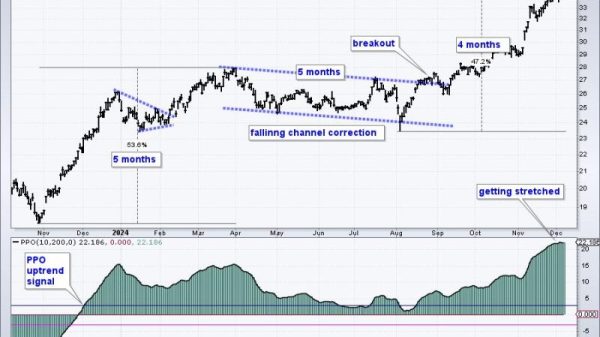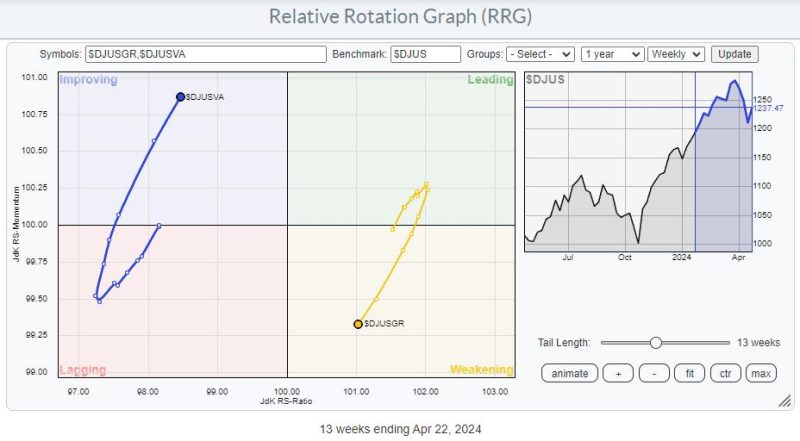The recent shift in market dynamics has reignited the debate between growth and value investing. As value stocks begin to take the lead, investors are faced with the challenge of navigating potential downside risks in the stock market. In this article, we will explore 10 key downside risks for stocks as value gains traction, shedding light on potential obstacles that investors should consider.
1. **Rising Interest Rates**: One of the primary concerns for stocks in a value-driven environment is the impact of rising interest rates. As bond yields increase, the attractiveness of equities diminishes, leading investors to reallocate their portfolios. This shift can trigger market volatility and put downward pressure on stock prices.
2. **Economic Slowdown**: A slowing economy can significantly hamper the performance of value stocks, which are often more sensitive to economic conditions. If global growth stumbles or key economic indicators weaken, value stocks could face headwinds, dragging down overall market performance.
3. **Trade Wars and Geopolitical Uncertainty**: Trade tensions between major economies and geopolitical conflicts can inject uncertainty into the market, affecting investor sentiment and stock prices. As value stocks are closely tied to macroeconomic conditions, any escalation in trade disputes or geopolitical tensions could pose a risk to their performance.
4. **Inflationary Pressures**: Inflationary pressures can erode the real value of stocks, especially for value-oriented companies that may struggle to pass on increased costs to consumers. Rising inflation can also lead to higher interest rates, further dampening the prospects for value stocks and the broader market.
5. **Regulatory Changes**: Regulatory shifts or changes in government policies can impact specific industries or sectors, creating volatility in the market. Value stocks operating in heavily regulated sectors could be particularly vulnerable to adverse regulatory developments, affecting their profitability and stock prices.
6. **Tech Disruption**: The ongoing wave of technological innovation and disruption can pose a threat to traditional value stocks that may lag behind in adapting to technological changes. Companies that fail to embrace digital transformation or innovate effectively risk losing market share and competitiveness, impacting their stock performance.
7. **Corporate Debt Levels**: High levels of corporate debt can weigh down value stocks, especially in a rising interest rate environment. Companies burdened with excessive debt may struggle to service their obligations or fund growth initiatives, leading to credit downgrades, stock price declines, and potential defaults.
8. **Earnings Disappointments**: Value stocks are often selected based on their perceived undervaluation and potential for earnings growth. However, if companies fail to meet earnings expectations or experience a downturn in financial performance, their stock prices could suffer, triggering sell-offs and undermining investor confidence.
9. **Market Sentiment Shifts**: Investor sentiment plays a crucial role in driving stock prices, particularly for value stocks that rely on market perceptions of intrinsic value. Any abrupt shifts in sentiment, driven by factors such as news events, economic data releases, or geopolitical developments, can lead to rapid price fluctuations and increased market volatility.
10. **Black Swan Events**: Lastly, unforeseen and unpredictable events, known as black swan events, can disrupt financial markets and catch investors off guard. From natural disasters to pandemics to financial crises, black swan events can trigger widespread panic, selling pressure, and market dislocation, impacting the performance of value stocks and the broader stock market.
In conclusion, while the resurgence of value investing presents opportunities for investors seeking undervalued opportunities, it is crucial to remain vigilant about the potential downside risks in the stock market. By staying informed, diversifying their portfolios, and conducting thorough due diligence, investors can better navigate the challenges and uncertainties that lie ahead in the dynamic landscape of value investing.


























